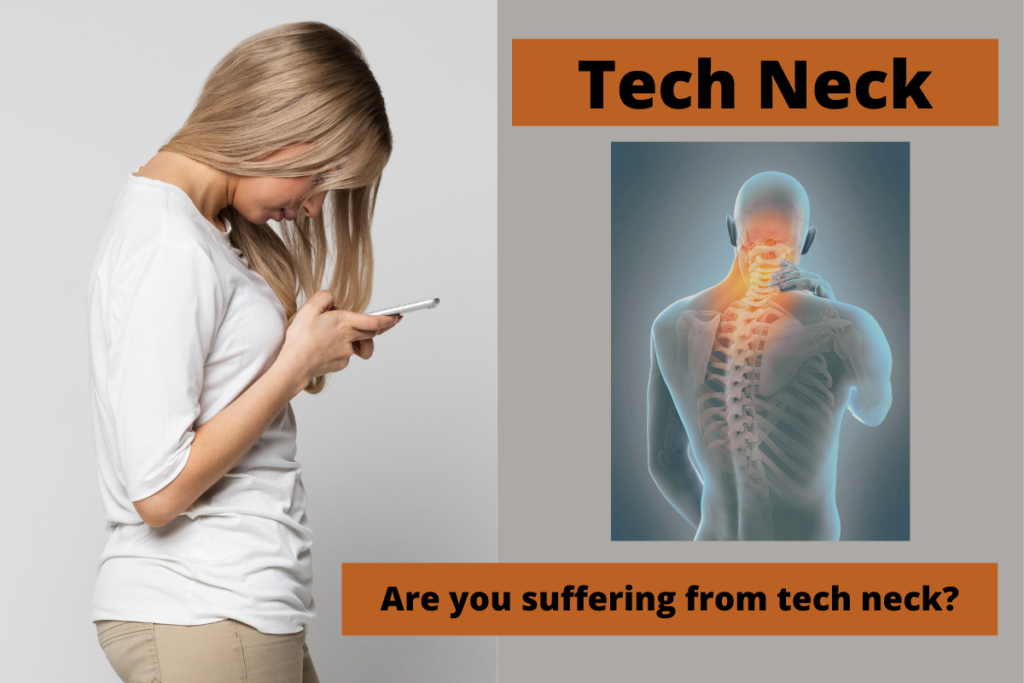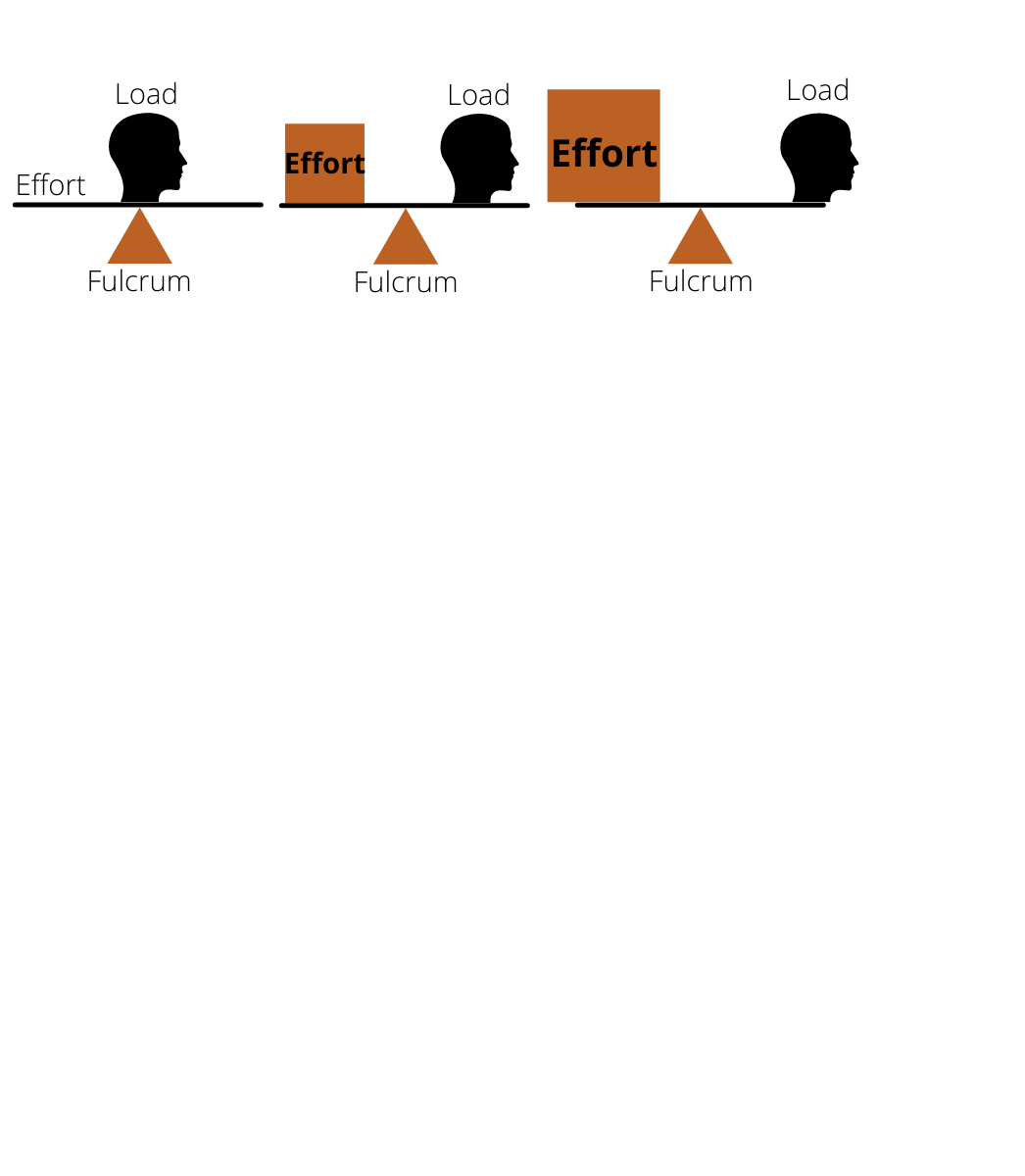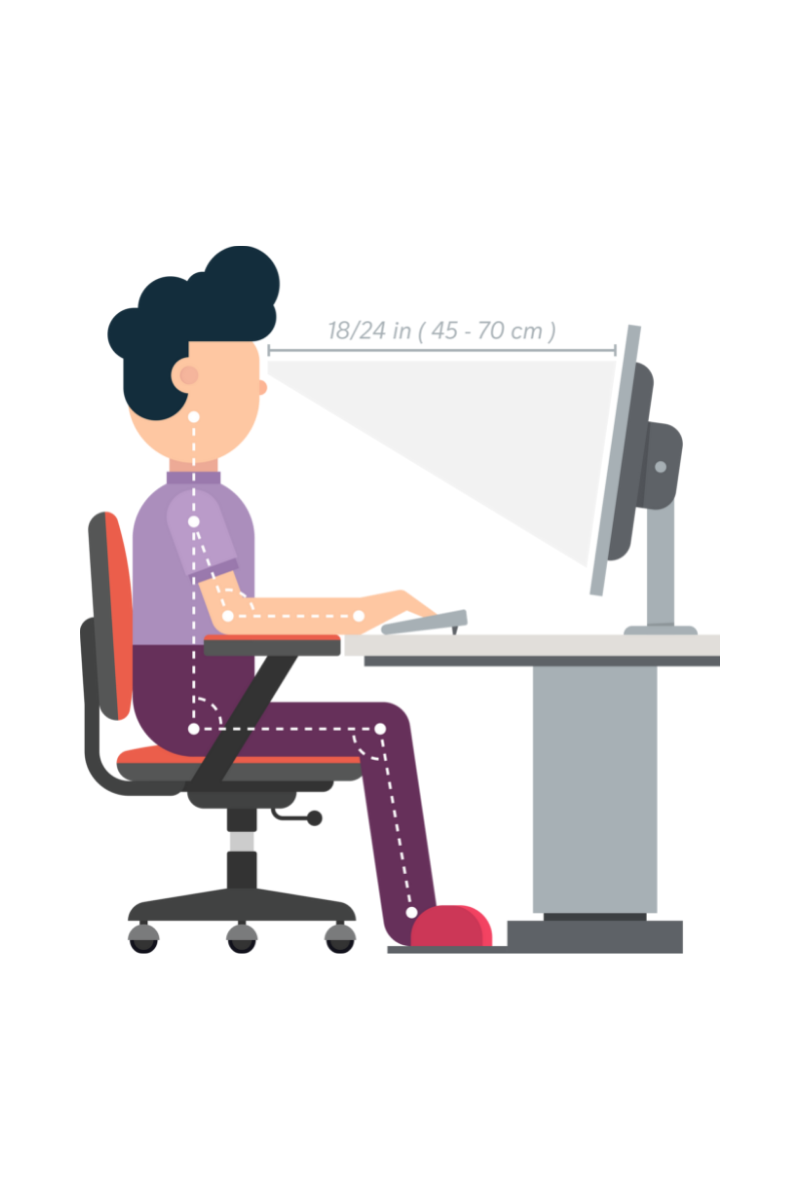Tech Neck

Ask Yourself This: Do I use a cellphone, tablet, or computer for work or play for more than a few hours at a time? Do your children use their devices for more than a few hours at a time? If you answered yes, you or your children might be developing tech neck and you should start watching out for symptoms.
Symptoms Of Tech Neck
At first symptoms typically start out mild and infrequent, but as the condition progresses frequency and intensity can increase.
Some of the common symptom include:
Achy pain in neck, shoulders, and upper back
- Achy pain in neck, shoulders, and upper back
- Headaches
- Reduced mobility in the neck, shoulders, and upper back
- Pain with movement
- Jaw pain and clenching
- Tingling or numbness into arms and hands

I Can’t Get Away From Technology! What Should I Do?
In Nathan’s blog “Plight of the Desk Jockey” he goes into detail about what you can do when you find yourself stuck in front of a screen all day. https://ottawamassagetherapy.ca/blog/plight-of-the-desk-jockey/
How to Correct and prevent tech neck: 3 simple steps
- Stretch and strengthen muscles to counteract the effects of using your device.
- Improve your overall posture – In my last blog I explained how to do a quick wall check and how to use the wall to improve your posture. https://ottawamassagetherapy.ca/blog/how-bad-is-your-posture-take-the-wall-test-by-rae-quinnie/
- Ergonomics – Keep your screen at eye level whenever possible. When your screen is below eye level you will tilt your head forward. The more forward your head goes the heavier it gets, therefore your muscles have to increase their effort to support your head.

*In this photo your head is the load, your spine is the fulcrum, and your muscles are the effort.
Ergonomics: Building a Better Work Station
Ergonomics is defined by Merriam-Webster as, “a science that deals with designing and arranging things so that people can use them easily and safely”. We can use this science to improve your workspace.
How do I improve my workspace?
- Computer monitor at arm’s length away directly
in front of you - Top of screen at eye level or slightly below unless you wear bifocals lower the screen 1-2 inches more)
- Chair should support spinal curve
- Upper arms close to your body
- Hands at or below elbow height
- Wrists straight
- Enough clearance under desk for your knees, thighs, and feet
- Knees level with hips if seated
- Feet rest flat on the floor
- Keep key objects close to you

Buying the perfect desk, chair, or monitor might be nice, however it’s not practical, and that’s okay! I have used a rolled up sock as a wrist support, and it worked great. Look around your house and see what you can find. Try using some pillows or a stack of books. It might not look pretty but it can still be effective.
